Today, EFSP starts a new series of film specials. We begin with a classic of the Ufa studios, Der blaue Engel/The Blue Angel (Josef von Sternberg, 1930). It was the last of the classic films of Emil Jannings and the first of Marlene Dietrich.

Emil Jannings. German postcard by Ross Verlag, no. 4746/1, 1929-1930. Photo: Ufa. Publicity still for Der blaue Engel/The Blue Angel (1930).
Der blaue Engel was written by Carl Zuckmayer, Karl Vollmöller and Robert Liebmann – with uncredited contributions by director Josef von Sternberg. It is based on Heinrich Mann's novel Professor Unrat (Professor Garbage).
Weimar Germany, 1924. Middle aged Dr. Immanuel Rath (Emil Jannings) is a respectable literature professor at the local Gymnasium – a college preparatory high school. Most of his students don't like him, and nickname him "Unrat" - German for garbage.
Dr. Rath learns that many of his boys often frequent a cabaret called Der blaue Engel - the Blue Angel - which he believes is corrupting their impressionable young minds. He heads to the Blue Angel himself to catch the boys in the act and shame them into not going again.
Rath is able to catch the boys, but in the process he also understands what attracts the boys, namely the beautiful headlining performer Lola Lola (Marlene Dietrich). Consumed with desire for Lola, Rath returns to the cabaret the following evening, to return a pair of panties that were smuggled into his coat by one of his students, and stays the night with her.
Lola seemingly also falls in love with him. Rath subsequently resigns from his position at the academy to marry Lola and travels with her from cabaret to cabaret. He becomes a clown in Lola's cabaret troupe to pay the bills.
Their relationship ends up not being what either envisioned. His growing insecurities about Lola's profession as a "shared woman" eventually consume him with lust and jealousy. As Rath performs his last act, he witnesses his wife embrace and kiss the strongman Mazeppa (Hans Albers), her new love interest, and is enraged to the point of insanity. He attempts to strangle Lola, but is beaten down by the other members of the troupe and locked in a straitjacket.
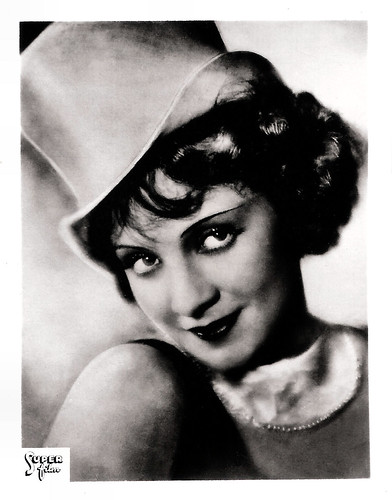
Small German collectors card. Photo: Super film. Publicity still for Der blaue Engel/The Blue Angel (Josef von Sternberg, 1930) with Marlene Dietrich.
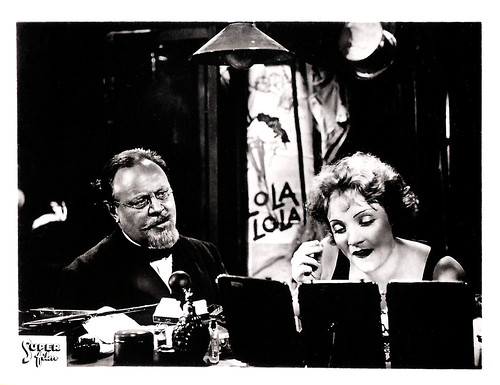
Small German collectors card. Photo: Super film. Publicity still for Der blaue Engel/The Blue Angel (Josef von Sternberg, 1930) with Emil Jannings and Marlene Dietrich.
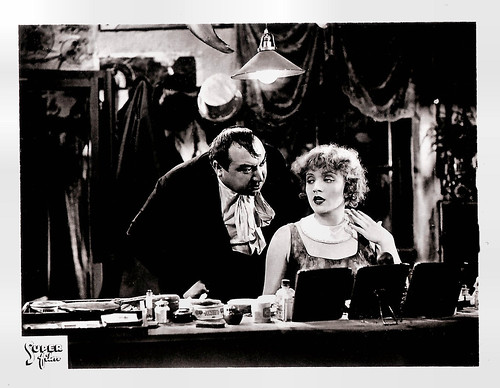
Small German collectors card. Photo: Super film. Publicity still for Der blaue Engel/The Blue Angel (Josef von Sternberg, 1930) with Kurt Gerron and Marlene Dietrich.
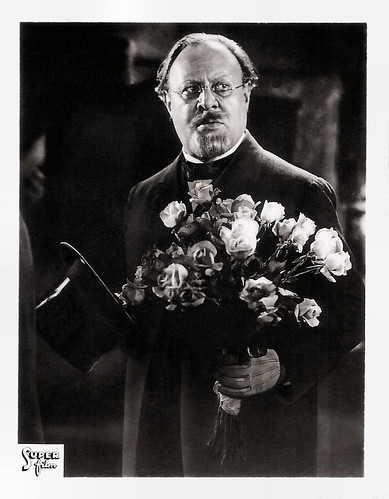
Small German collectors card. Photo: Super film. Publicity still for Der blaue Engel/The Blue Angel (Josef von Sternberg, 1930) with Emil Jannings.
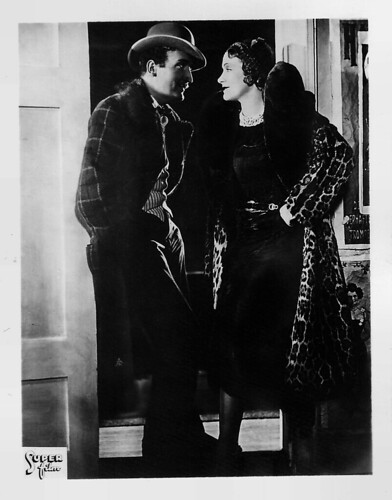
German collectors card. Photo: Super film. Publicity still for Der blaue Engel/The Blue Angel (Josef von Sternberg, 1930) with Hans Albers and Marlene Dietrich.
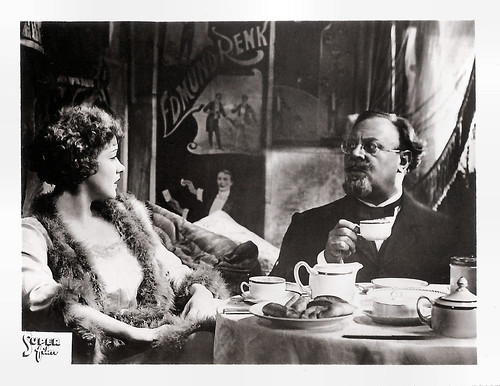
German collectors card. Photo: Super film. Publicity still for Der blaue Engel/The Blue Angel (Josef von Sternberg, 1930) with Emil Jannings and Marlene Dietrich.
Der blaue Engel/The Blue Angel (1930) was Emil Jannings's first film back in Germany after his trip to Hollywood, where he had won two Oscars with silent films. It was also his final English-language film. Der blaue Engel was released in both German and English versions, although the latter version was thought lost for many years. The German version is considered to be superior, it is longer and not marred by actors struggling with their English pronunciation.
Many actresses from the stage and screen were considered for the role of Lola Lola. Among the early contenders were Gloria Swanson, Louise Brooks, Brigitte Helm, Lya De Putti, Käthe Haack and Lotte Lenya.
There are various accounts of why Marlene Dietrich was cast as Lola Lola, but the one given by director Josef von Sternberg in his autobiography is that Dietrich came to test for the film with a bored, world-weary attitude because she was convinced she wasn't going to get the role and was merely going through the motions - and Sternberg hired her because that world-weary attitude was precisely what he wanted for the character.
Dietrich's screen test for has survived. In it, she pretends to upbraid her pianist, Friedrich Hollaender, the film's composer. She then sings the chorus of You're the Cream In My Coffee, after which she climbs on the piano, hitches up her skirt to show her legs and sings, in German, a torch song called Why Cry by Peter Kreuder, a well-known song-writer who became the film's orchestrator. As the test ends, Dietrich breaks character and apologizes to Hollander.

Marlene Dietrich. German postcard by Ross Verlag, no. 5582/1, 1930-1931. Photo: Paramount.
Original trailer for Der blaue Engel (1930). Source: Eurekaentertainment (YouTube).
Sources: Wikipedia and IMDb.

Emil Jannings. German postcard by Ross Verlag, no. 4746/1, 1929-1930. Photo: Ufa. Publicity still for Der blaue Engel/The Blue Angel (1930).
Under the spell of Lola Lola
Der blaue Engel was written by Carl Zuckmayer, Karl Vollmöller and Robert Liebmann – with uncredited contributions by director Josef von Sternberg. It is based on Heinrich Mann's novel Professor Unrat (Professor Garbage).
Weimar Germany, 1924. Middle aged Dr. Immanuel Rath (Emil Jannings) is a respectable literature professor at the local Gymnasium – a college preparatory high school. Most of his students don't like him, and nickname him "Unrat" - German for garbage.
Dr. Rath learns that many of his boys often frequent a cabaret called Der blaue Engel - the Blue Angel - which he believes is corrupting their impressionable young minds. He heads to the Blue Angel himself to catch the boys in the act and shame them into not going again.
Rath is able to catch the boys, but in the process he also understands what attracts the boys, namely the beautiful headlining performer Lola Lola (Marlene Dietrich). Consumed with desire for Lola, Rath returns to the cabaret the following evening, to return a pair of panties that were smuggled into his coat by one of his students, and stays the night with her.
Lola seemingly also falls in love with him. Rath subsequently resigns from his position at the academy to marry Lola and travels with her from cabaret to cabaret. He becomes a clown in Lola's cabaret troupe to pay the bills.
Their relationship ends up not being what either envisioned. His growing insecurities about Lola's profession as a "shared woman" eventually consume him with lust and jealousy. As Rath performs his last act, he witnesses his wife embrace and kiss the strongman Mazeppa (Hans Albers), her new love interest, and is enraged to the point of insanity. He attempts to strangle Lola, but is beaten down by the other members of the troupe and locked in a straitjacket.

Small German collectors card. Photo: Super film. Publicity still for Der blaue Engel/The Blue Angel (Josef von Sternberg, 1930) with Marlene Dietrich.

Small German collectors card. Photo: Super film. Publicity still for Der blaue Engel/The Blue Angel (Josef von Sternberg, 1930) with Emil Jannings and Marlene Dietrich.

Small German collectors card. Photo: Super film. Publicity still for Der blaue Engel/The Blue Angel (Josef von Sternberg, 1930) with Kurt Gerron and Marlene Dietrich.

Small German collectors card. Photo: Super film. Publicity still for Der blaue Engel/The Blue Angel (Josef von Sternberg, 1930) with Emil Jannings.

German collectors card. Photo: Super film. Publicity still for Der blaue Engel/The Blue Angel (Josef von Sternberg, 1930) with Hans Albers and Marlene Dietrich.

German collectors card. Photo: Super film. Publicity still for Der blaue Engel/The Blue Angel (Josef von Sternberg, 1930) with Emil Jannings and Marlene Dietrich.
Dietrich's bored, world-weary attitude
Der blaue Engel/The Blue Angel (1930) was Emil Jannings's first film back in Germany after his trip to Hollywood, where he had won two Oscars with silent films. It was also his final English-language film. Der blaue Engel was released in both German and English versions, although the latter version was thought lost for many years. The German version is considered to be superior, it is longer and not marred by actors struggling with their English pronunciation.
Many actresses from the stage and screen were considered for the role of Lola Lola. Among the early contenders were Gloria Swanson, Louise Brooks, Brigitte Helm, Lya De Putti, Käthe Haack and Lotte Lenya.
There are various accounts of why Marlene Dietrich was cast as Lola Lola, but the one given by director Josef von Sternberg in his autobiography is that Dietrich came to test for the film with a bored, world-weary attitude because she was convinced she wasn't going to get the role and was merely going through the motions - and Sternberg hired her because that world-weary attitude was precisely what he wanted for the character.
Dietrich's screen test for has survived. In it, she pretends to upbraid her pianist, Friedrich Hollaender, the film's composer. She then sings the chorus of You're the Cream In My Coffee, after which she climbs on the piano, hitches up her skirt to show her legs and sings, in German, a torch song called Why Cry by Peter Kreuder, a well-known song-writer who became the film's orchestrator. As the test ends, Dietrich breaks character and apologizes to Hollander.

Marlene Dietrich. German postcard by Ross Verlag, no. 5582/1, 1930-1931. Photo: Paramount.
Original trailer for Der blaue Engel (1930). Source: Eurekaentertainment (YouTube).
Sources: Wikipedia and IMDb.
No comments:
Post a Comment